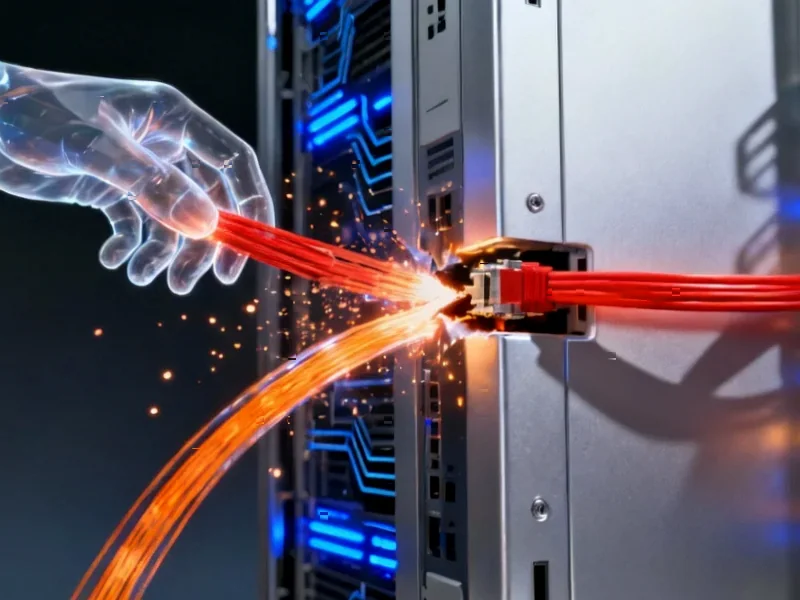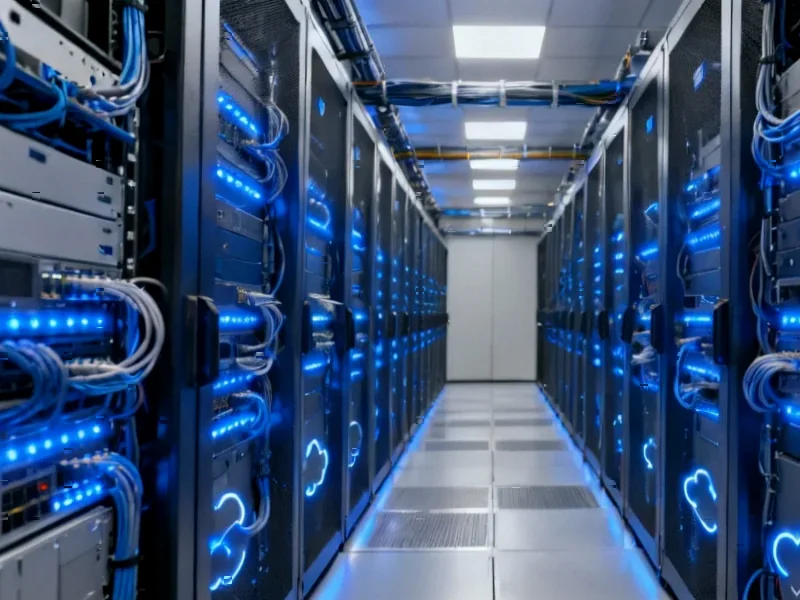According to Fast Company, a momentous week in the technology sector demonstrated no signs of slowing in the artificial intelligence infrastructure boom despite bubble concerns. Nvidia, whose processors form the backbone of the AI revolution, became the first company to surpass $5 trillion in market value. Microsoft and OpenAI signed a deal enhancing the ChatGPT maker’s fundraising capabilities, with OpenAI promptly beginning groundwork for an initial public offering that could value the company at $1 trillion. Amazon announced 14,000 corporate job cuts just days before its cloud unit posted its strongest growth in nearly three years. These developments, combined with numerous earnings calls and executive interviews, confirm AI has cemented itself as the single biggest catalyst for global corporate investment and the engine of the current market rally.
Table of Contents
- The Unprecedented Scale of AI Infrastructure Investment
- Shifting Competitive Dynamics and Market Concentration
- The Contradiction in Workforce Strategies
- The Sustainability Question Beyond Valuation Metrics
- Long-Term Economic Implications and Market Structure
- Related Articles You May Find Interesting
The Unprecedented Scale of AI Infrastructure Investment
What we’re witnessing is arguably the largest concentrated infrastructure buildout in modern technological history, comparable in scale to the early internet backbone development but compressed into a much shorter timeframe. Unlike previous technology cycles that primarily involved software development, the current artificial intelligence boom requires massive physical infrastructure – data centers, specialized processors, and energy resources that represent tangible capital expenditure. This explains why companies like Nvidia, which produces the essential hardware, are seeing such extraordinary valuation growth. The infrastructure requirements for training and running advanced AI models create natural bottlenecks that benefit established players with manufacturing scale and technical expertise.
Shifting Competitive Dynamics and Market Concentration
The concentration of value among a few key players raises important questions about market sustainability and competition. While Nvidia’s $5 trillion valuation reflects its dominance in AI chips, and OpenAI‘s potential $1 trillion IPO valuation signals confidence in AI software platforms, this concentration creates systemic risks. Smaller competitors face enormous barriers to entry given the capital requirements for training state-of-the-art models, which can exceed hundreds of millions of dollars per training run. The Microsoft-OpenAI partnership further illustrates how established tech giants are leveraging their financial resources to secure strategic positions in the AI ecosystem, potentially limiting innovation from smaller, more agile players.
The Contradiction in Workforce Strategies
Amazon’s simultaneous workforce reduction and cloud growth highlights a broader trend in how companies are navigating the AI transition. While investing heavily in AI infrastructure, many technology firms are streamlining other operational areas, creating what appears to be contradictory signals about business health. This reflects a strategic reallocation of resources toward AI capabilities while maintaining profitability in core businesses. The 14,000 corporate job cuts at Amazon likely represent efficiency measures and restructuring rather than overall business contraction, particularly given the strong performance of AWS, which benefits directly from increased AI workload demand.
The Sustainability Question Beyond Valuation Metrics
Beyond the obvious bubble concerns around astronomical valuations, there are more fundamental sustainability questions about the AI infrastructure boom. The energy consumption required to power AI data centers is becoming a significant constraint, with some estimates suggesting AI could consume as much electricity as entire countries within a few years. Additionally, the specialized nature of AI hardware creates potential single points of failure – if Nvidia faced production disruptions or if ChatGPT-style models encounter regulatory hurdles, the entire ecosystem could experience significant volatility. The market’s current enthusiasm assumes continuous, uninterrupted growth in AI adoption across industries, which may not materialize as quickly as anticipated.
Long-Term Economic Implications and Market Structure
The current AI infrastructure investment cycle is likely to reshape global economic dynamics for years to come. Countries and companies making strategic investments now are positioning themselves for what could become the foundational technology platform of the next several decades, similar to how internet infrastructure defined the past thirty years. However, the path to an initial public offering for companies like OpenAI involves navigating uncharted regulatory territory and public market expectations for profitability that may conflict with the capital-intensive nature of AI development. The coming months will reveal whether current valuations reflect genuine transformative potential or speculative excess, but the scale of commitment from major technology players suggests this infrastructure buildout will continue regardless of short-term market fluctuations.
Related Articles You May Find Interesting
- Nscale’s AI Ambition: Why Data Infrastructure Matters More Than GPUs
- Tariff Inflation Looms as Holiday Shopping Season Approaches
- AI’s Trillion-Dollar Week Reshapes Global Tech Landscape
- Amazon’s Cloud Renaissance: Jassy’s $33B AI Gambit Pays Off
- Intel and BOE’s 1Hz Display Revolution Could Transform Laptop Battery Life



